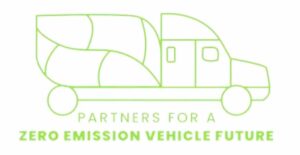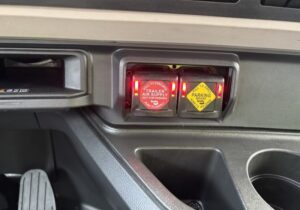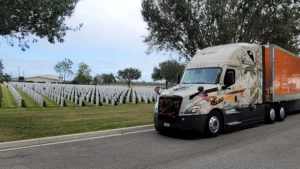
TACOMA, Wash. — Speaking jointly on a recent panel at the Green Transportation Summit and Expo, representatives from Daimler Truck, Navistar, PACCAR and Volvo Group outlined a shared vision for an industry-wide transition to medium-and heavy-duty zero-emission vehicles (ZEV).
“ZEV commercial vehicles are in production and ready for use in many applications,” Dawn Fenton, vice president of government and public affairs at Volvo Group North America, said. “But the ZEV transition relies on more than OEM innovation. To get these vehicles onto roads, our nation must prioritize a coordinated and comprehensive strategy, encouraging ZEV uptake and addressing gaps in charging and utility infrastructure. For this reason, Volvo Group applauds the recent adoption of the Inflation Reduction Act and the Infrastructure Investment and Jobs Act which provide meaningful federal support for heavy-duty zero emission vehicle and infrastructure deployment.”
The four OEMs are founding members of Partners for a Zero Emission Vehicle Future, a growing coalition of stakeholders from across the transportation industry that considers ZEVs to be the future of commercial transportation. PZEVF (Partners for a Zero Emission Vehicle Future) members include trucking associations, private operators, and other stakeholders committed to meeting environmental and economic goals of medium-and heavy-duty ZEV deployment.
Members of the panel addressed a wide range of issues, including the benefits of a coordinated national approach to ZEV deployment, the importance of point-of-sale EV sales incentives to defray upfront purchase costs for fleets and operators, the challenges facing electric utilities tasked with upgrading grids and the interplay of federal and state legislation in aligning policies and programs to support deployment targets.
The Inflation Reduction Act, which contains tax credits for the purchase of medium-and heavy-duty ZEVs and installation of charging infrastructure, was cited by panelists as an example of policy progress, who cautioned more must be done.
“In the early stages of the industry’s transition to zero emissions, grants and incentives are essential to help operators and owners offset initial higher purchase costs and encourage deployment of these vehicles on our nation’s roads,” said Alec Cervenka, Kenworth Zero Emissions sales manager, who represented PACCAR on the panel. “Down the road in the future, as volumes increase and the industry brings to bear economies of scale, we eventually expect ZEV technology to provide a Total Cost of Ownership on par or better than the current diesel truck.”
Panelists pointed to California as an example of medium-and heavy-duty ZEV leadership, noting that more needed to be done to achieve the aggressive ZEV adoption goals that many states are pursuing, with investment in charging infrastructure as a key example.
“We are committed to zero emission trucks and buses,” Kevin Maggay, senior manager of public policy at Navistar, said. “Successful build out of charging and refueling infrastructure is one of the key drivers to successful adoption of zero emission technologies. As states look to grow deployment of commercial vehicle zero emission technology, infrastructure build out should lead and keep pace with vehicle deployments to drive a smooth technology transition.”
Despite the challenges ahead, OEM representatives were adamant that, through collaboration and cooperation among public and private stakeholders, the end goal of ZEV commercial truck fleets was achievable.
“From consumers to policymakers to OEMs, it is clear the nationwide transition to ZEVs is necessary and imminent,” Kevin Otzenberger, eMobility product marketing senior analyst at Daimler Truck North America, said. “We must learn from the earliest lessons this nascent transition has to offer in order to make the long-term, nationwide deployment of ZEVs a success.”
The Trucker News Staff produces engaging content for not only TheTrucker.com, but also The Trucker Newspaper, which has been serving the trucking industry for more than 30 years. With a focus on drivers, the Trucker News Staff aims to provide relevant, objective content pertaining to the trucking segment of the transportation industry. The Trucker News Staff is based in Little Rock, Arkansas.















